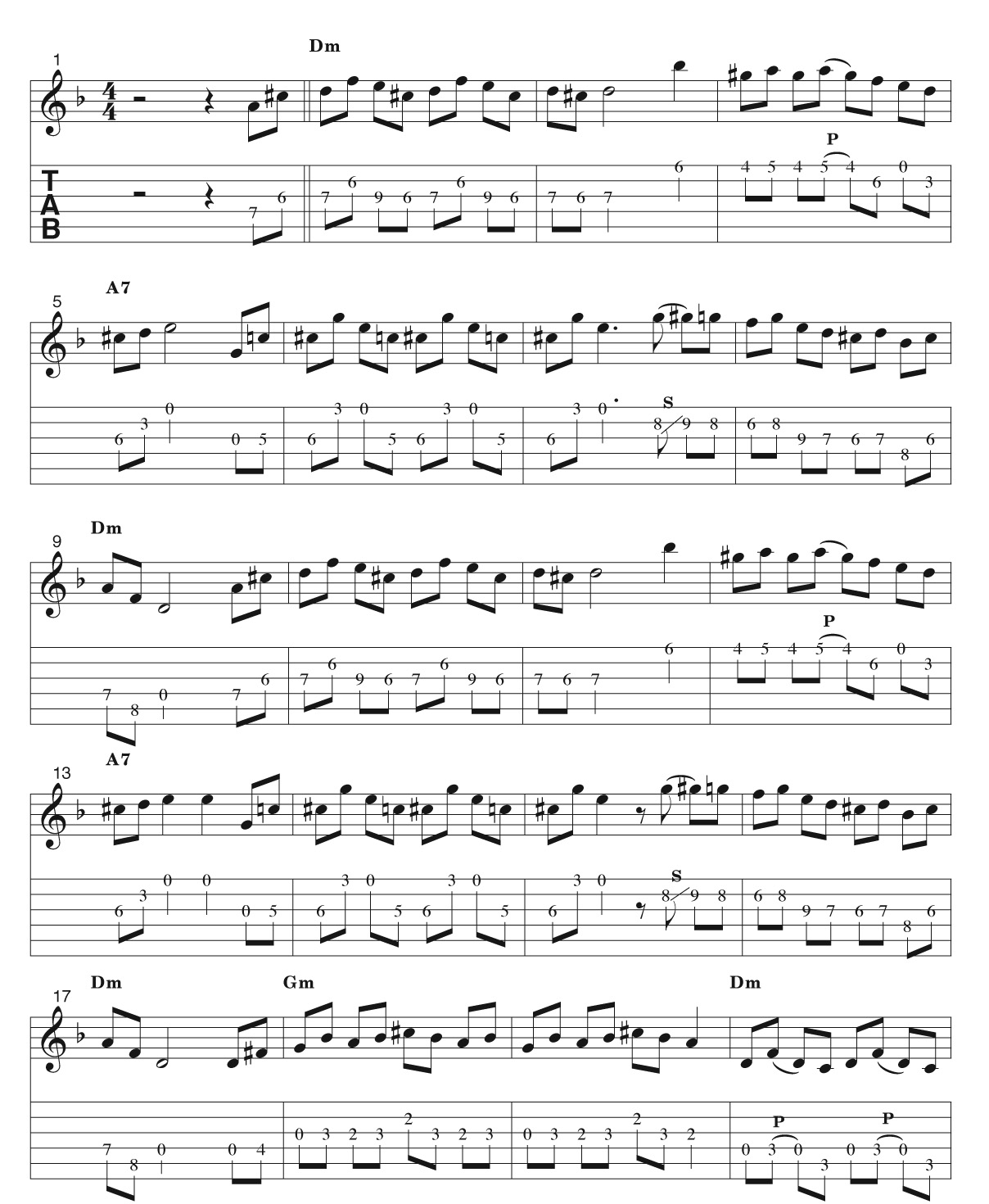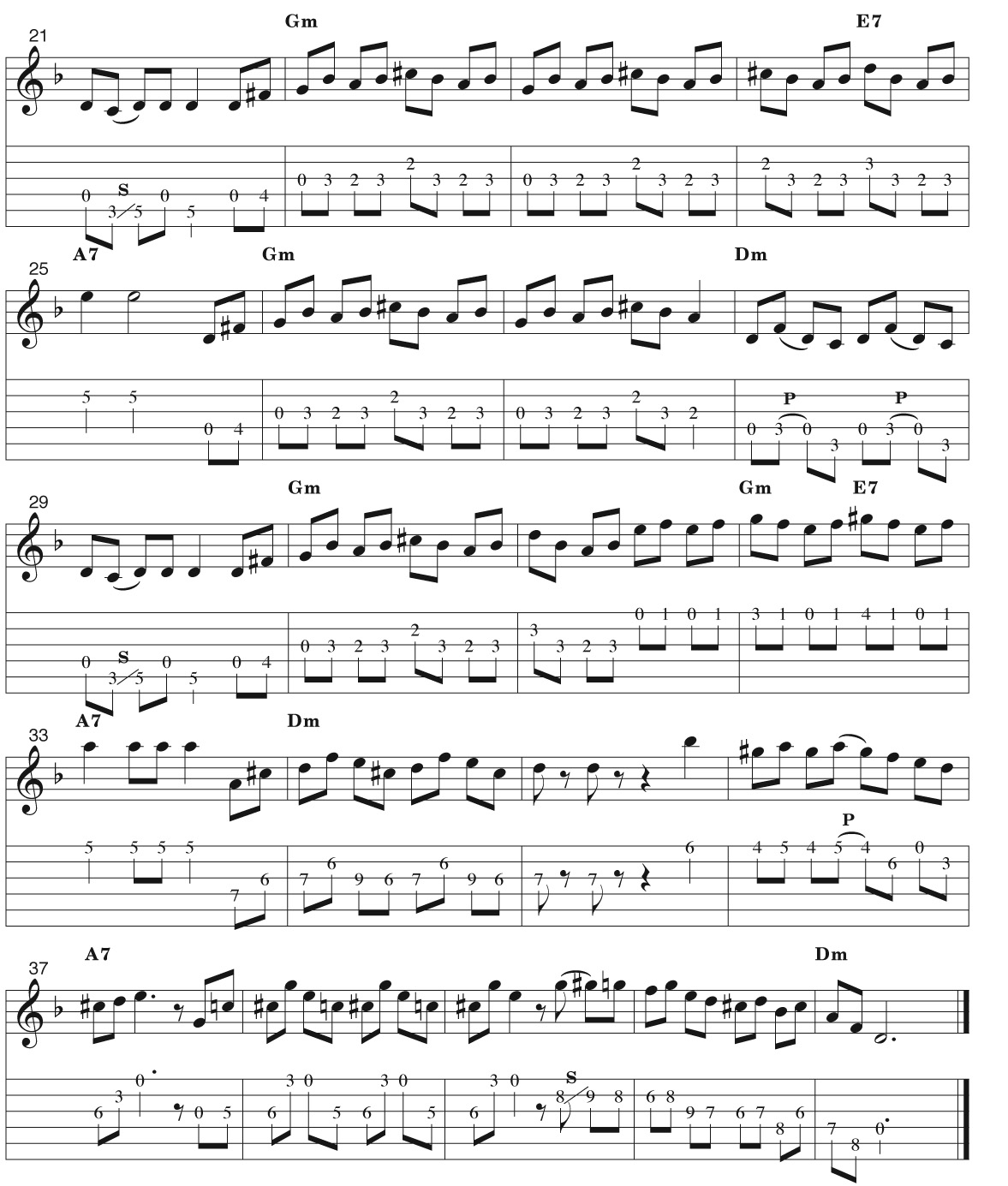Free Monthly Newsletter Lesson - October 2008"Forked Deer" Creating Inventive Variations on a Flatpicking Standardby Mickey AbrahamDownload MP3 | Download PDF
Thanks for all your great feedback on my last
lesson, “Tipsy Gypsy.” This time my goal is to return to classic
fiddle tunes in style. We’re going to tackle some new and interesting
variations on one of the most popular flatpicking tunes around, Forked
Deer.
My arrangement explores the melody of the
tune and then flows into some jazzy ideas. You can use this lesson as
an entire break to the tune, or you can just pull ideas that you may
find new and interesting and use them in your already existing version
of this tune. Either way, I know this version will offer you creative
and inventive ideas to throw into this jam session powerhouse.
The first eight measures are a straightforward
flatpicking version of the melody. On the repeat of the A section I
tried to incorporate some ideas that I have picked up from studying
jazz harmony and chord substitution. In measure 10 I have stressed
the sound of the F Lydian mode (major scale with a raised 4th). I am
just staying in the key of C but, to me, the placement of the note adds
a modern touch to this arrangement.
The lines in measures 11 and 12 actually imply
chords that aren’t being played. Forked Deer is usually based on a I,
IV, V chord progression -- in this case, C, F, and G. These lines
imply a melody over a I, VI, II, V (C, Am, Dm, G) chord progression.
Below I have given both chord options. Not to worry though, even if the
chord player does not use these subs the lines will still sound hip.
In measure 25 I have used a G augmented idea. I
find the augmented note (the raised fifth), if used properly, creates
an organized tension. To me, the B section of Forked Deer is the
perfect place to try these kinds of ideas because the tune shifts to
the V chord anyway. The V chord (G) naturally has a lot of tension!
The lick beginning at measure 27 is also based on organized tension. I
am playing major pentatonic scales (R, 2, 3, 5) beginning on the root,
b9, b5, and 5 of the G scale.
Even though I am into trying to define music
in terms of theory, it is NOT necessary to know any music theory to jam
out on this version. Have fun and let me know what you think of the
arrangement. Try it on your friends and see what reaction you get when
you stress the Lydian mode or accent the flatted ninth while
flatpicking this standard. Don’t forget to email me your questions and
comments to [email protected].


|